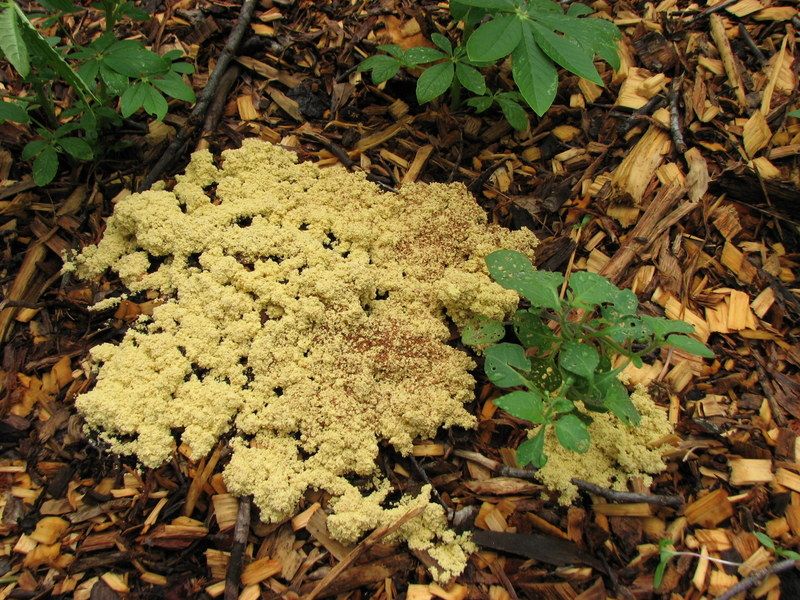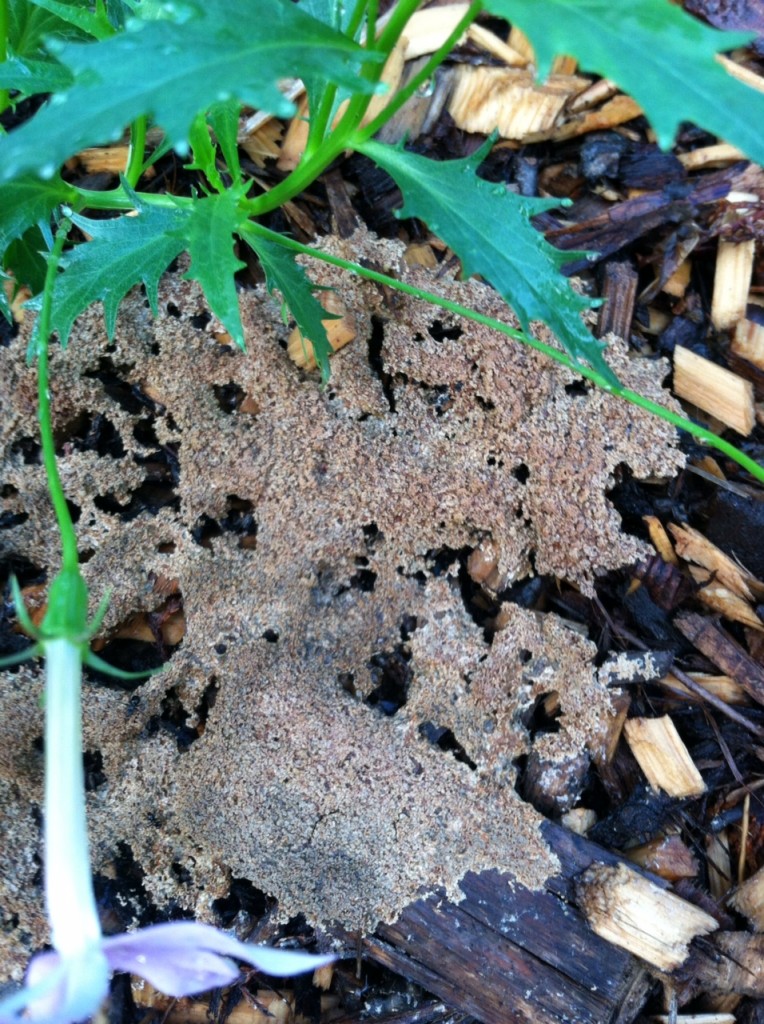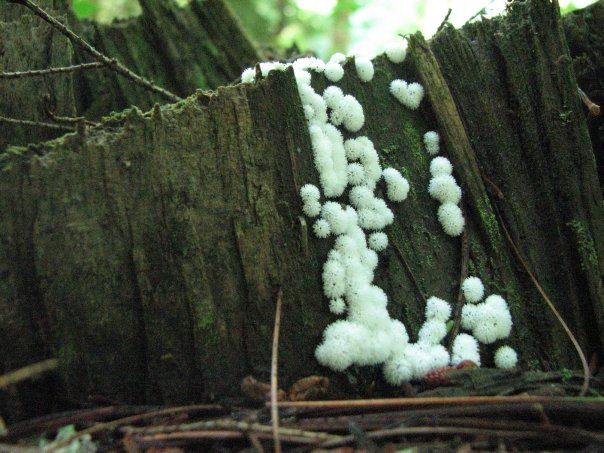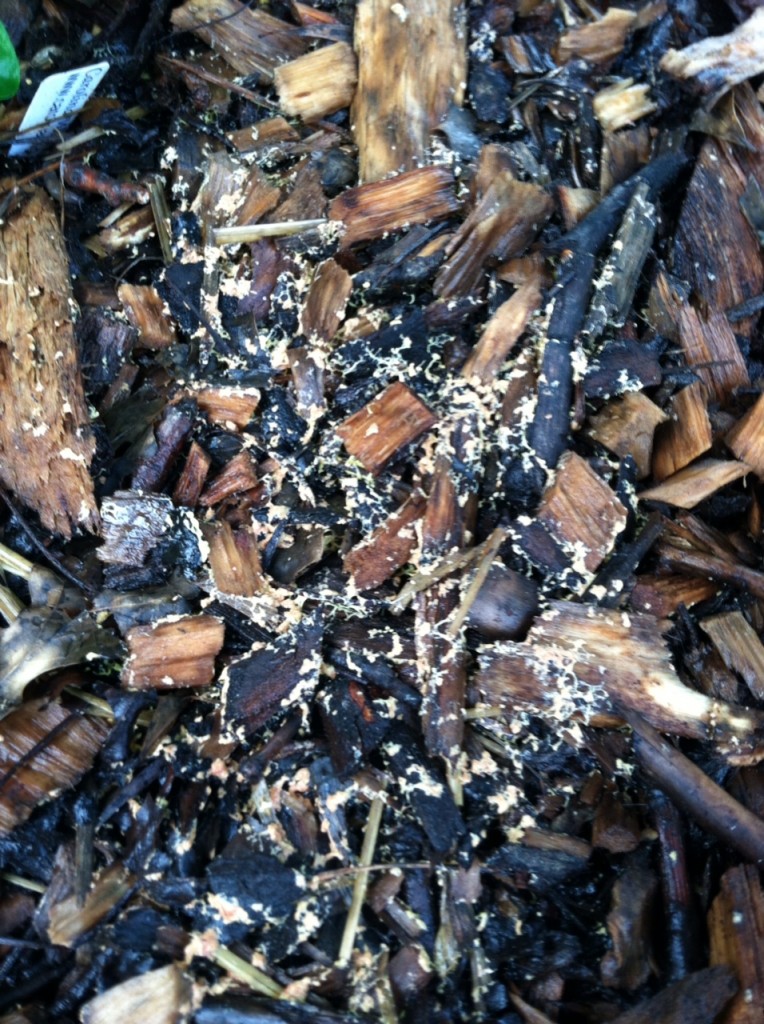How To Identify (and Be Slightly Grossed Out By) Dog Vomit Slime Mold
With all of this week’s heavy upstate rains, microbiological processes are kicking into full gear and bacteria and fungi are actively working on the process of decay. Many species of mushrooms are popping up in yards, lawns, mulch, and on almost any other damp substrate.
Mushrooms are rarely an eyesore — most of them are quite attractive. They simply indicate a healthy soil ecosystem. However, instead of colorful turkey tail mushrooms or fairy-tale fly agarics, some of you may find ominous patches of bright yellow mushy looking goop spreading in parts of your garden. It probably won’t take much imagination to think, “That looks like something threw up!”
You’re not the first to think of a disgorged meal when seeing these unexpected blobs and thus the common name of the mass is Dog Vomit Slime Mold (which in my opinion is one of the most gross common names of a living thing).

Photo Caption: Several clumps of this dog vomit slime mold (Fuligo septica) have shown up in our front yard over the past few weeks.
Click the link to keep reading.
In truth, Dog Vomit Slime Mold (Fuligo septica) is not a fungus (as are true molds) at all, but instead a member of the Myxogastia order – aka the plasmodial slime molds (as opposed to the Dictyostelids – aka cellular slime molds). As a whole, slime molds are fascinating life forms. Like fungi, they go through a number of life stages. Generally, they act as amoeba-like protists hunting about in the soil while preying on bacteria and fungi in a process called phagocytosis (entrapment and internal digestion like other amoebas do, whereas fungi digest their food externally with excreted enzymes). When conditions get right (think “wet”) a colony of slime mold will change into its fruiting body phase to reproduce by spore. The emergence of these massive blobs of slime mold are the indicator of the species’ reproduction.
Dog vomit slime mold will typically appear in gardens with mulch after heavy spring rains. The individual slime molds have been in the soil all along, but the wetness and the warming weather encourages the reproductive state. While often unappealing looking, the Clemson Extension says that these slime molds are generally harmless.
In our experience, they occasionally smother low-hanging plants in their way, causing a bit of damage. To avoid rotting leaves, simply scrape away the slime mold with a stick or spray it off with a hose (if your soil is already drenched from heavy rain, the hose might not be ideal). Within a few days the slime mold will loose its coloration, turning brown or grey, and then disappear entirely.

Photo Caption: After a day or two the dog vomit slime mold will loose its bright coloration and become brown or grey. A few days more after this point and there will be little to no indication that the slime mold was ever present at all.
Because slime molds predate bacteria and yeasts, their presence is often an indicator that there is some good active microbiology present. Slime molds eat other fungi and bacteria, so they prefer soils that have an abundance and variety of life. You can think of them as an approval badge for your healthy soil instead of a temporary eyesore.

Photo Caption: This pink slime mold (likely Lycogala epidendrum) is closely related to the dog vomit slime mold found in gardens. The slime molds seem to possess juxtaposing characteristics of both beauty and grotesqueness.
Other slime molds are out right now and they come in a rainbow of colors. The one in the above photo was found at the Joyce Kilmer Memorial Forest and looks a bit like a cockscomb.

Photo Caption: White patches of slime mold (probably some species of Ceratiomyxa) growing on a stump in the woods.
This white one is separated into obvious circular clumps and looks a bit like Totoro dust bunnies.
Whatever form they appear in, slime molds contribute to the entire decomposition process and shouldn’t be a matter for real concern. They’re just part of the composting food web.
~Nathaniel
7 thoughts on “How To Identify (and Be Slightly Grossed Out By) Dog Vomit Slime Mold”
Comments are closed.


Curbstone Valley Farm - June 12, 2013 5:13 pm
I love slime molds! This one though is certainly not as attractive as some. The first time I found it here there was a huge blob of it right by the orchard gate, sprawling across some wood chips. It really had me fooled for a minute, but it is actually quite fascinating close up!
Curbstone Valley Farm´s last blog post ..Soap Making: Our First Milk Soaps
Nathaniel Lord
Twitter: nhlord
- June 18, 2013 12:24 pm
It’s definitely kind of disconcerting if you’re not familiar with it or expecting it. Probably one of the most accurately named living things around.
PlantPostings
Twitter: plantpostings
- June 12, 2013 9:20 pm
Fascinating! Thanks for all the info. I’ve been noticing more fungi lately, too, and I think I’ve seen that “dog vomit” slime mold in mulch before. Wild.
PlantPostings´s last blog post ..Do you ever throw caution to the wind?
Nathaniel Lord
Twitter: nhlord
- June 18, 2013 12:22 pm
Thanks for reading. If you’ve got mulch then it is a pretty sure bet that the dog vomit slime mold has shown up at some point or another. It is quite the ubiquitous soil microbe.
Donna@Gardens Eye View - June 16, 2013 8:34 am
I love learning more about fungi…they are so fascinating.
Donna@Gardens Eye View´s last blog post ..Those Wonderful June Blooms
Nathaniel Lord
Twitter: nhlord
- June 18, 2013 12:21 pm
Pretty much my favorite things to read and learn about on a day to day basis. Them and bugs. Get me reading about them and I’ll be happy.
Mary Davis - February 1, 2015 9:54 am
Is this the same as Scrambled-egg slime? I have seen something very close here in S. Louisiana that drips. Love this weird stuff!